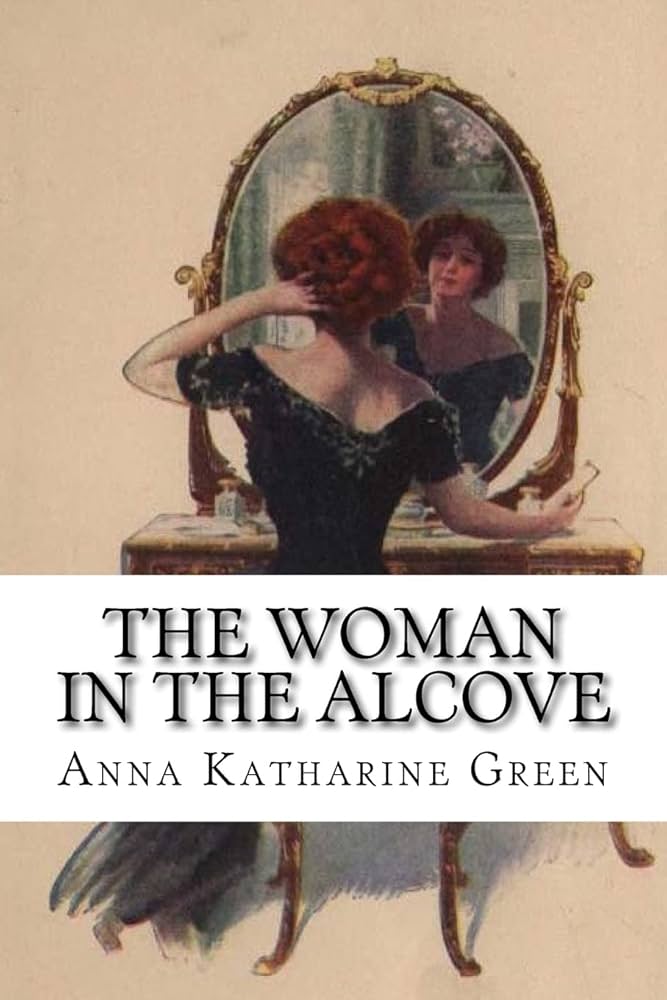Chapter VII — The woman in the Alcove
byChapter VII — The woman in the Alcove begins with the narrator embarking on a determined and isolated trek toward the mountainous terrains of New Mexico. Her goal is to reach the Placide mine where Abner Fairbrother, a man central to a recent scandal, is reportedly recovering from a severe illness. Although advised against it due to the harsh path and dangerous slopes, she presses on, believing that a critical piece of information can only be uncovered at this remote site. Rumors surrounding the mysterious appearance of a woman nurse at the mine only intensify her suspicion. Her journey becomes symbolic—a personal test of resolve as she navigates not just the terrain, but the deeper moral implications of uncovering the truth. The mine’s surroundings are bleak and wind-swept, with sparse facilities and the constant echo of uncertainty. What awaits her isn’t comfort, but an opportunity—one last chance to hear a truth no one else is willing or able to reach.
Upon arrival, the narrator is met with hesitation and mistrust. The doctor overseeing Fairbrother’s condition remains firm—no contact with the patient is permitted. Yet her quick thinking and fabricated story about an injured horse buy her a place to stay the night at the camp. This decision is not without risk. The narrator is fully aware that her presence might spark suspicion or even hostility. Still, the cost seems worth it. From the moment she lays eyes on the modest tents pitched across rocky ground, she senses how far removed this place is from the grand drawing rooms of New York where the tragedy began. The remoteness adds to the narrative tension, making every whisper and gesture seem heavier with meaning. Here, miles away from the city’s scrutiny, truths remain buried—not just in rock but in memory and silence.
As night settles in, an unexpected arrival stirs the atmosphere—a local magistrate has come to the mine under a pretense. His real goal is clear: to elicit testimony from Fairbrother that might offer clarity in a murder case swirling with unanswered questions. Accompanying him is a nurse, previously seen at the mine, whose role appears more strategic than medical. Her presence signals a plan—one designed to gently draw out answers without worsening Fairbrother’s health. She seizes a rare lucid moment to ask pointed yet subtle questions about a famous gem. Her inquiry is neither rushed nor aggressive. It’s careful, designed to bypass resistance. Fairbrother, unaware of the broader implications, answers with quiet certainty: the diamond in question is real.
That single declaration changes everything. The narrator, listening from a hidden corner of the room, understands its weight. Fairbrother’s affirmation implies the diamond was never swapped or counterfeited. It validates prior suspicions that what happened the night of Mrs. Fairbrother’s death was deliberate, calculated, and not driven by accident or confusion. A plot may have been in motion long before the social event where the tragedy occurred. Her mind races—if the diamond was genuine, the motive becomes clearer. Someone coveted it enough to orchestrate murder, and the investigation must now shift in that direction. Despite the bleak surroundings and moral uncertainty of eavesdropping, the narrator feels justified. A vital clue has been uncovered, and it may well alter the course of everything that follows.
As dawn nears, the narrator quietly prepares to leave. Though she remains undetected, the mental strain of holding secrets and carrying suspicions weighs heavily on her. Yet she leaves the mine with more than she arrived with—a quiet confession overheard in the darkness that might help exonerate an innocent man back in New York. The contrast between the barren harshness of the mountain and the depth of the truth spoken inside the tent underscores a recurring theme in the story: important revelations rarely occur in grandeur; they often emerge in solitude, in whispers, and when least expected. Her mission has not ended, but she now possesses a thread—a piece of the puzzle that could either unravel a lie or reinforce a long-held truth.
This chapter explores the ethics of investigation and the courage it takes to listen closely even when silence seems safer. The narrator’s role transitions from passive observer to subtle infiltrator, revealing how emotional investment can guide intuition. Her actions straddle the line between invasion and justice-seeking, but the story makes clear that in times of ambiguity, answers don’t arrive clean. They come through effort, discomfort, and—above all—presence. Whether Fairbrother will survive or speak again remains uncertain, but his words, spoken in weakness, carry the strength of truth. The narrator, now a vessel of that truth, carries it back with the hope it may shift the weight of suspicion and lead to something greater than justice—a restoration of dignity for those wrongly accused.


